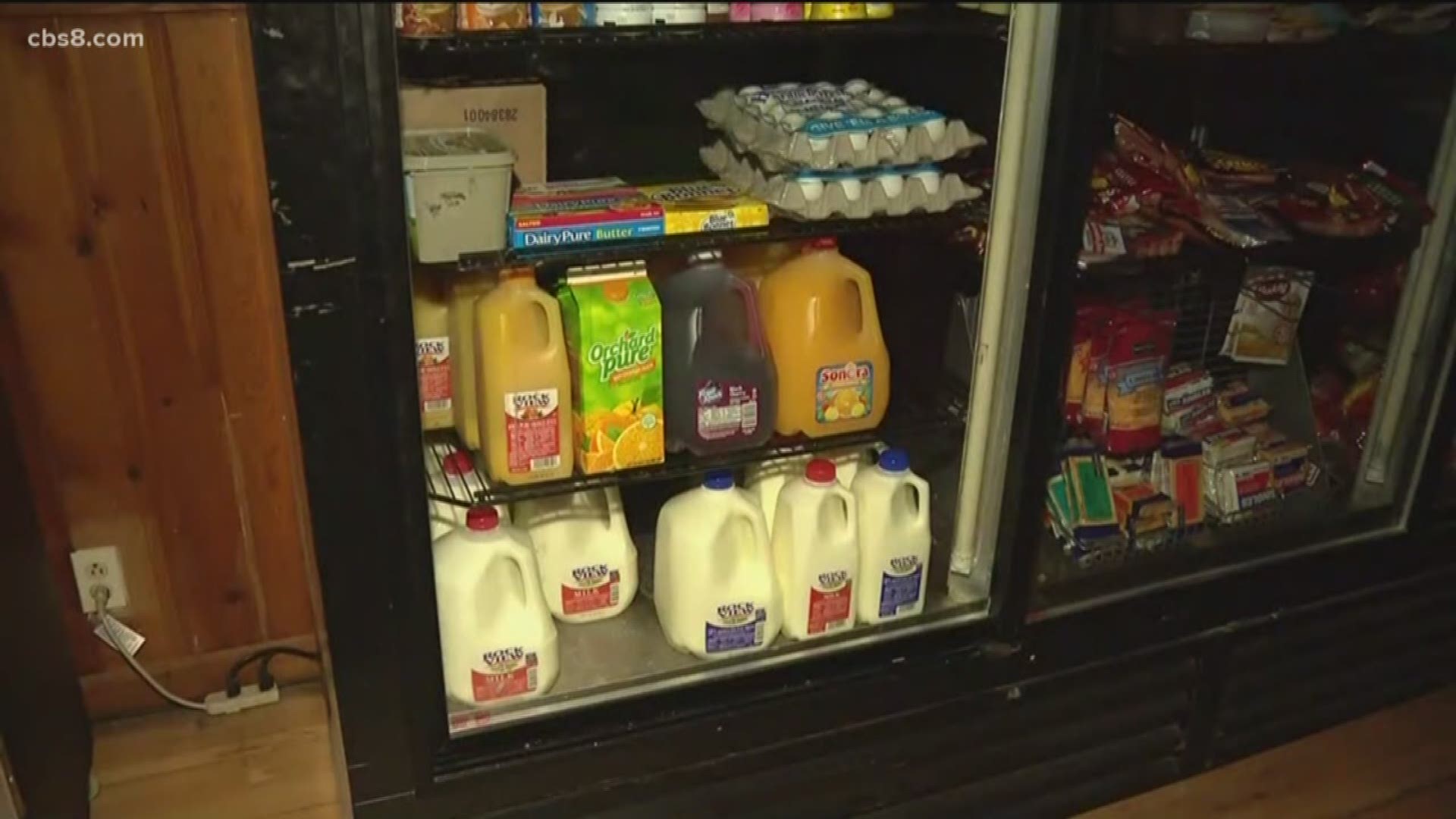SAN DIEGO COUNTY, Calif. — Thousands of SDG&E customers continued to be without power Friday evening due to the utility's public safety power shutoff.
Not only have East County residents become frustrated with being left in the dark, but many of them were left scrambling with what to do with the food left in their refrigerators and freezers.
Steve Griswold is one of the many homeowners without electricity in Alpine since Friday at 12 a.m. On Friday, he was preparing to throw away loads of frozen fish from his freezer that have started to thaw.
“All of these beautiful fish fillets are now thawing out - gorgeous amounts. Anything from fresh rock cod to fresh California abalone, it is only $235 a pound,” Griswold said.
The Alpine homeowner of over 20 years and retired special needs educator said that due to the power outage, he will have to cancel his father-son kayaking and fishing to San Felipe, Mexico they had planned for months.
“This was going to be a four-day trip, but a couple hundred dollars worth of bait is now going to die basically,” he said.
So how long is food safe in the refrigerator during a power outage?
Ryan Johnson, a program coordinator of the County of San Diego Department of Environmental Health Food and Housing Division said four hours is the limit.
“When you hit kind of a peak limit of four hours out of temperature some serious concerns. Anything below 41° is still going to be safe. If your refrigerator is able to hold that temperature, good, but as you go up and increase that temperature, bacteria is going to start growing,” Johnson said.
Johnson also said if food items are at room temperature at 70° they are only good for two hours.
Below are some tips:
- Inside your refrigerator, one key to keeping your food cooler longer is keeping everything close together.
- To seal all the cool air in, just keep your refrigerator door closed.
- Items inside a fully packed freezer can last two days and even longer when you add ice.
“Frozen food is about 32°, so you got a lot longer to go before you start creeping into the danger zone about 41°. It is better to be safe than sorry, and get sick, and get a food-borne illness,” Johnson said.
For a look at federal food and safety guidelines for both residents and businesses check out the United States Department of Agriculture Food Safety and Inspection Service website.

